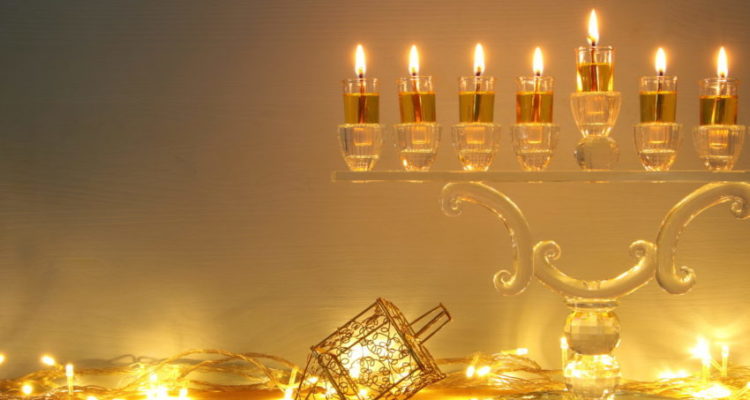Chanukah celebrates the return of religious freedom for the Jewish people after a period of harsh repression.
By World Israel News Staff
Chanukah (“dedication” in Hebrew) is celebrated this year from sunset on Sunday, December 22nd, until sunset on Monday, December 30th.
The festival commemorates both the re-dedication of the Second Temple in Jerusalem in 164 B.C.E. after its desecration by the ruling Seleucid (Syrian Greek) Kingdom, under Antiochus IV – and the return of religious freedom for the Jewish people after a period of harsh repression.
The popular revolt led by Judah Maccabee and his brothers has, ever since, symbolized the Jewish people’s fight for, and achievement of, its liberty and freedom as a nation against overwhelming odds.
Historical background
In 200 B.C.E, the Seleucid King, Antiochus III, conquered the Land of Israel and incorporated it into his kingdom. Neither he, nor his son and successor, Seleucus IV, forced their Hellenistic culture on the Jews.
However, his second son, Antiochus IV, who acceded to the throne in 175 B.C.E., instituted – with the active acceptance and support of many Jews – a policy of forced Hellenization and enacted harsh policies against those Jews who refused to adopt Hellenistic culture.
Under Antiochus IV, Jews were forced to eat pork, and Sabbath observance and circumcision were made punishable by death. In 167 B.C.E., the Temple was defiled and dedicated to the Greek god Zeus, and became the center of an idol-worshipping cult.
In 165 B.C.E., a popular revolt – led by Mattathias, an elderly priest from the town of Modi’in, and his five sons – broke out against Seleucid rule. Mattathias died soon thereafter, and was succeeded by his third son, Judah, also known as Judah Maccabee.
Following a brilliant guerrilla campaign – as well as several victories over far larger, regular Seleucid armies – Judah’s forces liberated Jerusalem in the winter of 164 B.C.E. The Temple was cleansed and, on the 25th of the Hebrew month of Kislev, rededicated.
At that time, according to rabbinic tradition, when Judah’s men sought to relight the Temple menorah, or candelabra, only one day’s worth of pure, undefiled olive oil was found, but the limited quantity of oil miraculously burned for the eight days required for new oil to be pressed.
Thus, the holiday of Chanukah commemorates both the liberation of Jerusalem and the re-dedication of the Temple, and the miracle of the oil. In one of the blessings recited each night, the Jewish people praise God “who performed miracles for our ancestors in those days at this season.”
Observance of Chanukah
The main element of Chanukah observance is the lighting of the eight-branched menorah (or menora) in the late afternoon, but not before the sun has begun to set, or at night.
On the first night, one candle (or oil lamp) is lit, with another one being added on each successive night until the eighth night when all eight candles (or oil lamps) are lit.
One extra light (the shamash) stands apart from the others and is used to light them. Special blessings are said when lighting the menorah, which is traditionally placed in a window or doorway where it will be visible from the outside – in order to publicize the miracle of the oil.
It is customary to eat foods fried in oil – typically jelly doughnuts or potato pancakes – during Chanukah.
In addition, children are given four-sided tops as toys. In the Diaspora, the sides bear the Hebrew letters that form the acronym: “A great miracle happened there.” In Israel, the sides bear the Hebrew letters that form the acronym: “A great miracle happened here.”
In the State of Israel, Chanukah is marked by a torch relay from Modi’in to Jerusalem and giant menorahs are also lit in public squares.
Chanukah is marked by special prayers and scriptural readings in the synagogue, as well as by a special addition to the regular blessing after meals.




